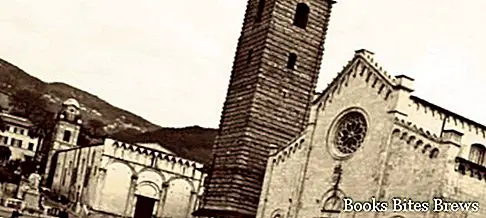What to see in Pietrasanta, attractions to visit in this Tuscan town in the province of Lucca, famous for its artistic marble workshops.
Tourist information
Tuscan town in the province of Lucca, Pietrasanta is located a few kilometers from the renowned beaches of Versilia, of which it is part, surrounded by a beautiful landscape characterized by hills, mountains and the Tyrrhenian Sea coast.
Its center, rich in art and culture, frequented by internationally renowned artists, is known for its artistic marble workshops, linked to the extraction of raw marble from the nearby Apuan Alps.
Since the past, marble processing has characterized this pretty town, the tombstones on the facades of two buildings in the historic center remind us of this, where Michelangelo signed important contracts for the extraction of marble destined for the facade of San Lorenzo in Florence. to 1843 the opening of the school dedicated to the teaching of the artistic working of marble, now the Art Institute.
In 1255, at the end of the feudal period and the beginning of municipal power, the nobleman of Milanese origin Guiscardo Pietrasanta, podestà of the Republic of Lucca, founded the town at the foot of the ancient Lombard fortress and the village of Sala.
In the fourteenth century Castruccio Castracani, lord of Lucca, fortified the village by restructuring the fortress of Sala and building the Rocchetta, named Arrighina in honor of his son Arrigo.
The territory and the city of Pietrasanta were often disputed by Pisani, Genovesi and Fiorentini, until 1513 when they came under the rule of the State of Florence, then of the Grand Duchy of Tuscany, until the unification of Italy.
What see
The Cathedral of Pietrasanta, dedicated to San Martino, stands on the homonymous square, where there are often exhibitions of sculptures by great artists.
Its origins date back to the thirteenth century, and in the fourteenth century it was enlarged.
Today's construction, which is the result of further modifications that took place between the seventeenth and nineteenth centuries, has a beautiful and elegant marble facade.
Inside there are valuable works of art, including the panel painting of the Madonna del Sole, patroness of the city and the municipality of Pietrasanta.
Recommended readings- Artimino (Tuscany): what to see
- San Galgano (Tuscany): what to see
- Poggibonsi (Tuscany): what to see
- Castiglione di Garfagnana (Tuscany): what to see
- Tuscany: Sunday day trips
Next to the Duomo stands the sixteenth-century brick bell tower, designed by the Florentine architect Donato Benti.
The exterior of the bell tower is incomplete because the original design included a marble cladding that was never built.
Due to the extraordinary complexity of the internal structure of the bell tower, where a brilliant self-supporting spiral staircase is carved, some scholars believe that the project is attributable to Michelangelo.




